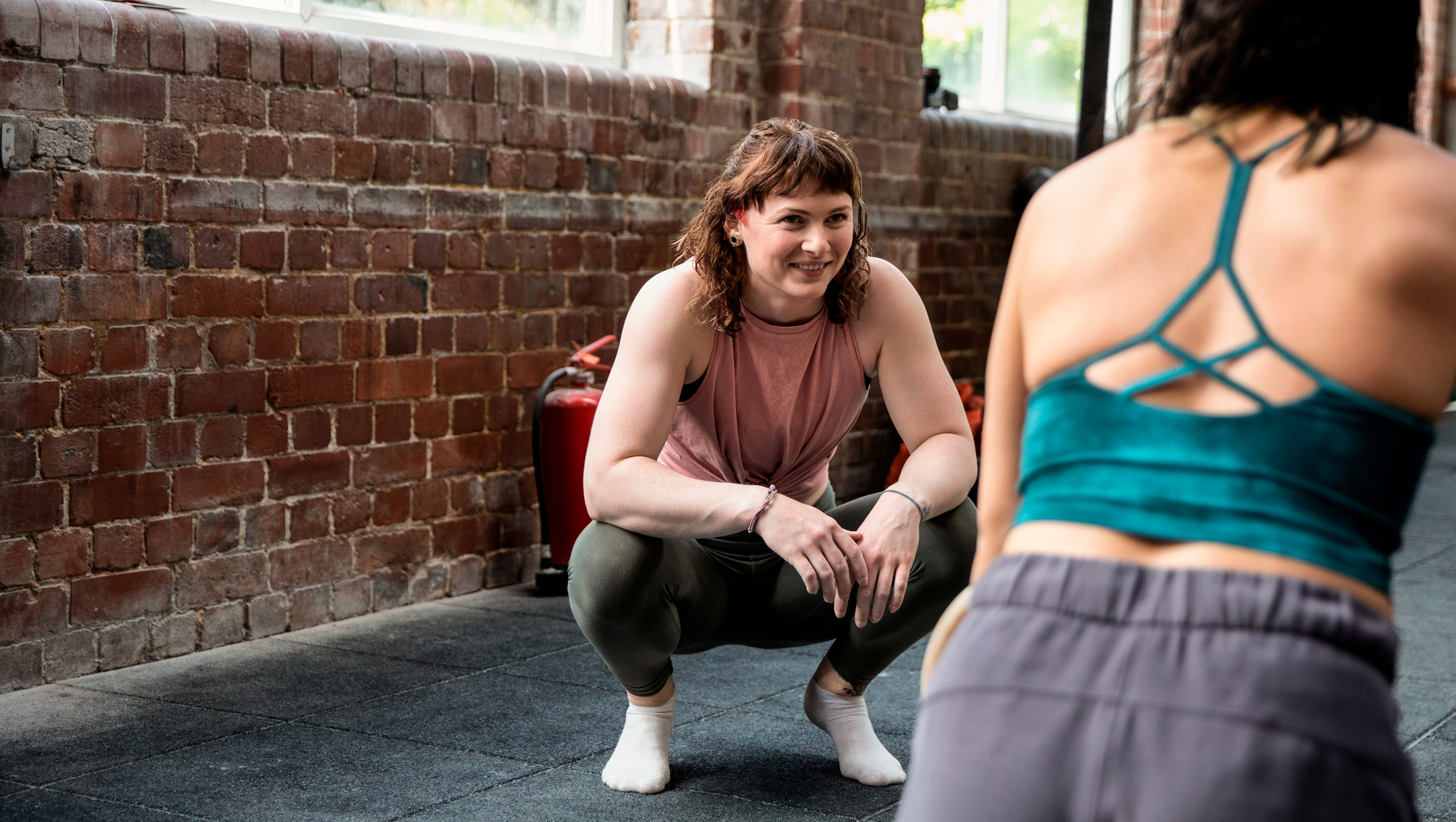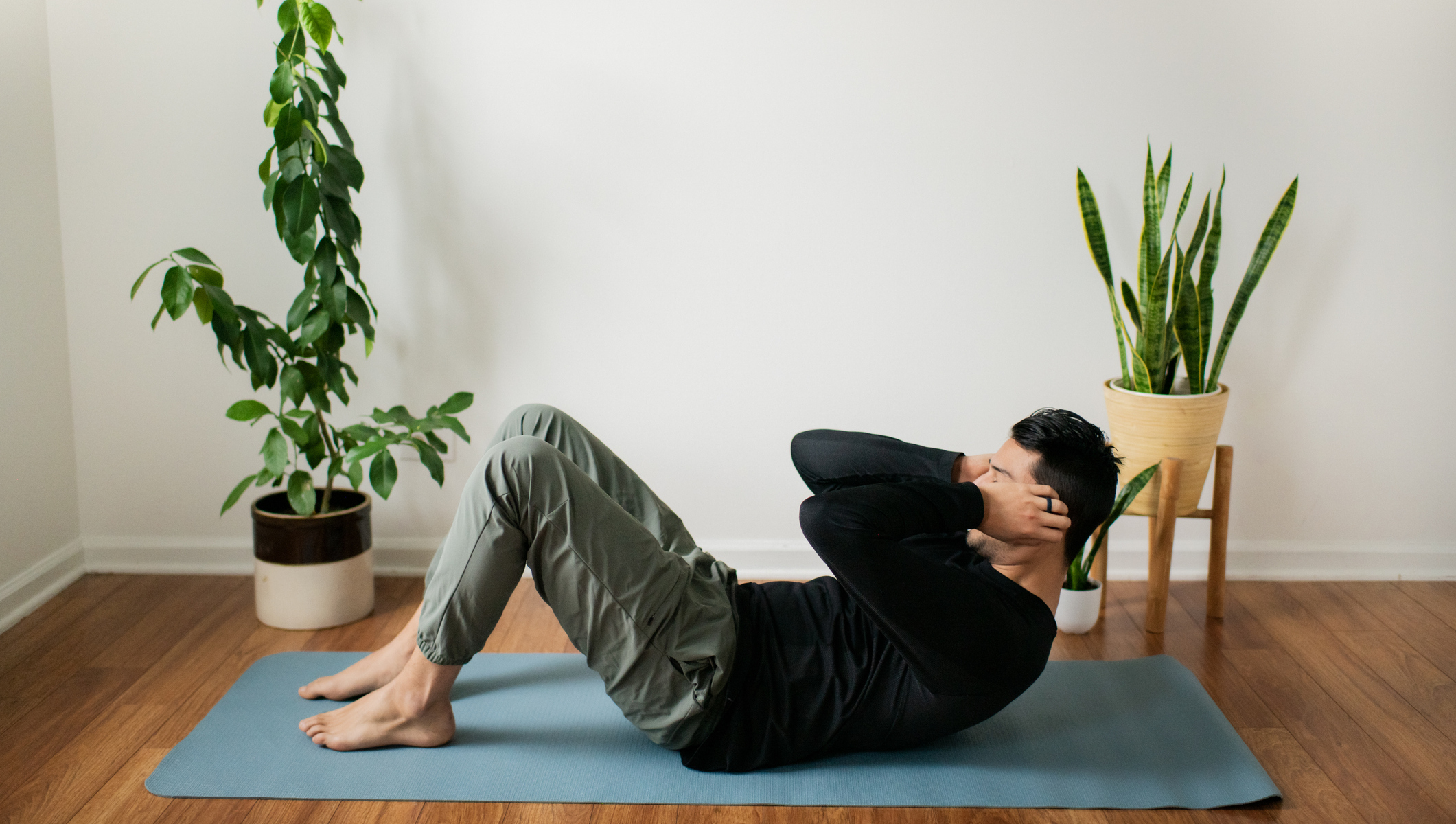
There are dozens of abs exercises to add to your workouts and it can be tempting to jump straight into some of the advanced moves you see experienced trainers demonstrate on social media. But Nick Mitchell, a fitness industry veteran and founder of Ultimate Performance, recommends a back-to-basics approach.
"Beginners, in my view, should primarily focus on abdominal crunches," says Mitchell. "Most abs and core exercises are too advanced and often butchered in their execution. I prefer to limit the options to two or three proven exercises, then focus on getting progressively stronger."
The abdominal crunch ticks all the right boxes for Mitchell because it's simple, it's easy to perform at home, in the gym or on your travels, and it works one of the main functions of the abdominal muscles: spinal flexion.
But Mitchell has a trick that makes crunches even more effective—using an abdominal crunch pad, or ab mat, that should be available in most commercial gyms, placed under your lower back (or Amazon sells one for $13).
“This allows for a greater range of motion—and a greater range equals greater stimulation, a greater challenge and, ultimately, a greater six-pack," says Mitchell.
If an ab mat is out of reach, you can use a small flat pillow or folded towel placed under your lower back that will allow your spine to naturally curve as you perform the exercise.
Once three sets of 12 reps cease to pose a challenge, Mitchell has also suggested three variations to move on to. "While you shouldn’t mix up your exercises too often, I do recommend switching up the angle of attack so you don’t hit a plateau," says Mitchell who suggests using the incline abdominal crunch, weighted abdominal crunch and decline abdominal crunch to continue testing your abs.
Here's how to do them all.
How to perform the abdominal crunch exercise

Sets: 3 Reps: 10-12
- Lie with your lower back on an ab mat, knees bent and feet flat on the floor.
- Touch your temples with your fingers, rather than holding your hands behind your head, with your elbows pointing to the sides.
- Press your lower back into the ab mat to help engage your deep-lying abs muscles.
- Maintaining tension in your core, curl your upper body towards your knees. This shouldn't be a big movement, but it should be just enough to feel your abs muscles working hard. "Focus on shortening and squeezing your abs muscles on the way up, and drawing your rib cage toward your pelvis," says Mitchell.
- Pause for two seconds at the top of the exercise, contracting your abs hard, then lower slowly. Here Mitchell suggests focusing on "lengthening and stretching your abs as you slowly descend."
- Inhale as you lower, exhale as you curl up, and maintain control throughout each and every rep.
Abdominal crunch variations
Use one of these variations instead of the crunch in some workouts to continue challenging your abs.
Incline abdominal crunch
Sets: 3 Reps: 10-12
- Set a weight bench to a shallow 10˚ incline and use an ab mat under your lower back to increase the range of motion for the exercise.
- Keep your feet flat on the floor, cross your arms and tuck your chin into your chest.
- Maintaining tension in your abdominal muscles throughout, curl your upper body off the bench.
- Lower under control.
Decline abdominal crunch
Sets: 3 Reps: 10-12
- This exercise mirrors the incline abdominal crunch, but should be performed on a dedicated decline weight bench set to a shallow 10° decline so you have to fight that little bit harder against gravity.
- To keep your muscles working hard, slow the tempo down. Lower for a count of two seconds, pause for two, drive up for one, pause for two.
Weighted abdominal crunch
Sets: 3 Reps: 10-12
- This exercise should be performed flat on the floor, increasing the difficulty level.
- Position an ab mat under your lower back, keep your feet flat on the floor and hold a dumbbell across your chest.
- Curl your upper body up.
- Pause for two seconds at the top of the exercise and contract your abs hard.
- Lower slowly.







